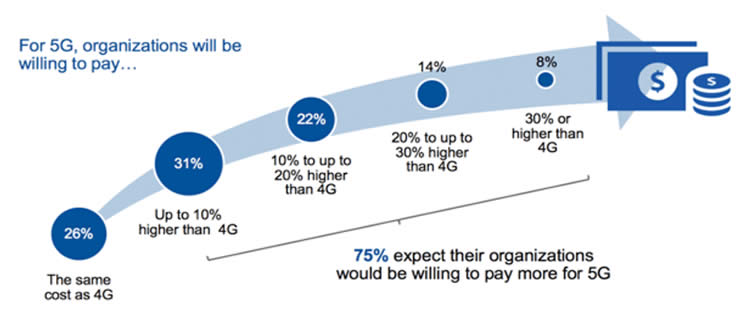
A recent global survey has found that 75 percent of all the end-user organisations asked would be willing to pay more for 5G mobile connectivity.
According to Gartner, organisations in the telecommunications industry are the most willing to pay more for next generation mobile network capabilities.
Sylvain Fabre, research director at Gartner organisations in the manufacturing, says that other organisations (such as those in the services and government sectors) are “less likely to be willing to pay a premium for 5G than telecom companies, which are willing to pay a 5G premium for their internal use”.
However, there seems to be a lack of understanding with regard to 5G’s potentially revolutionary effects. 92 percent of respondents don’t expect 5G to deliver savings or increase revenues for their organisations. Rather, they merely see 5G as a natural evolution of the mobile network.
“They tend to see 5G migration as a matter of gradual and inevitable infrastructural change, rather than as an opportunity to generate new revenue,” says Fabre.
On a more optimistic note, 57 percent of respondents intend to use 5G’s enhanced capabilities to drive Internet of Things capabilities. This is despite the fact that the number of devices that make up the IoT won’t exceed 4G’s capacity for another six years in most areas.
What all of these results seem to point to is that there is a general misunderstanding of 5G and what it will have to offer. For example, 84 percent of survey respondents believe that 5G will be widely available by 2020, when in fact this is unlikely to be so until 2022.
As a result of this widespread lack of understanding, Gartner believes that communications service providers need to provide realistic roadmaps for 5G coverage and performance to their marketing organisations, as well as 5G rollout plans for 2019 to 2021.
The Gartner survey can be read here.
Image credit: Gartner





